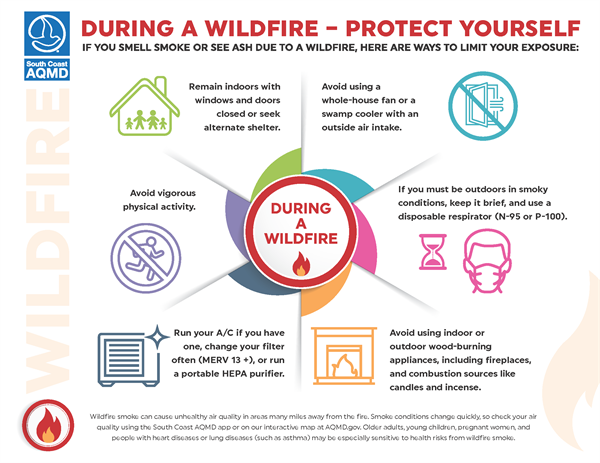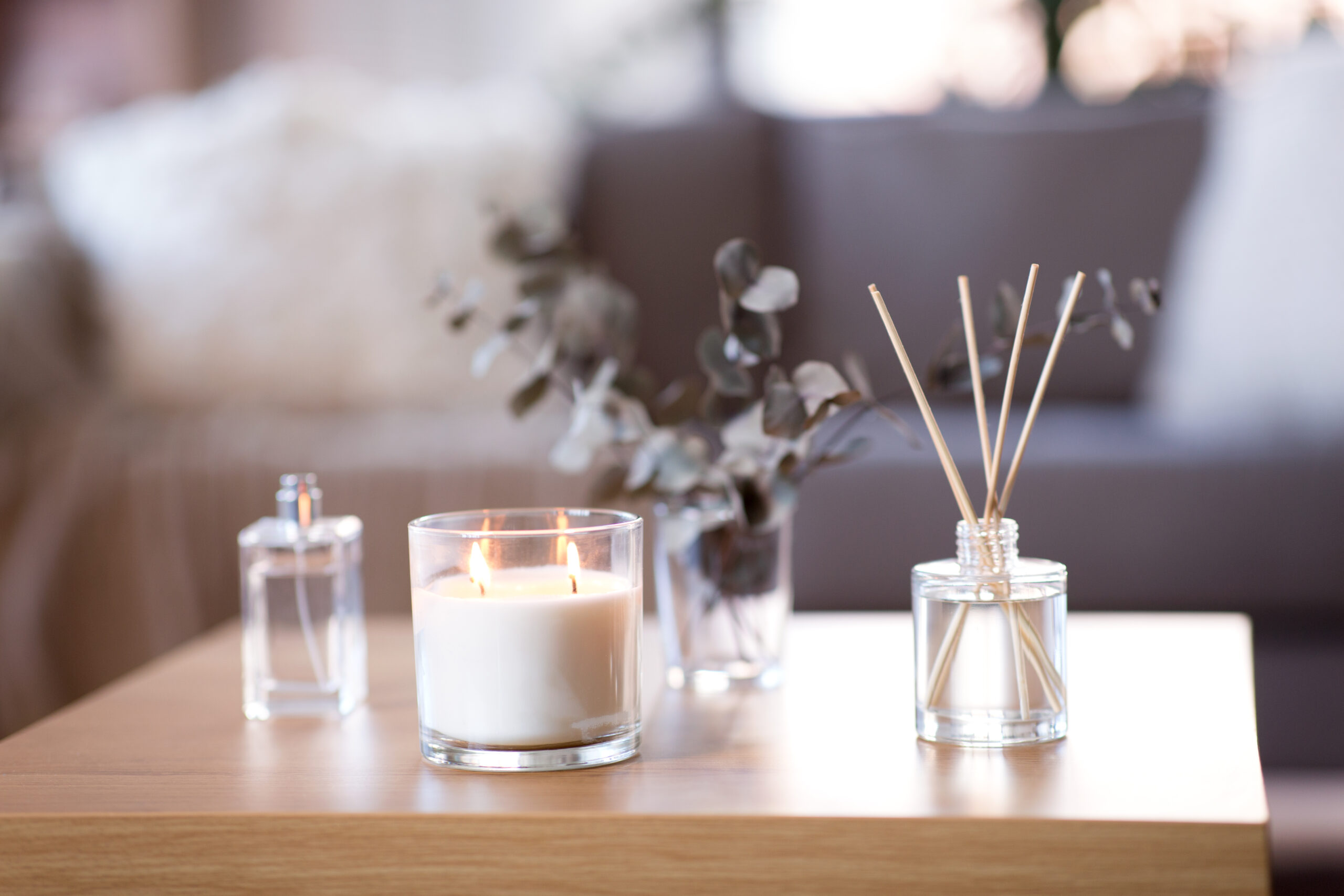To reduce indoor air pollution from candles and incense, follow a few key steps. Proper ventilation and choosing the right products can make a big difference.
Candles and incense fill our homes with pleasant aromas, but they can also release harmful pollutants. These pollutants can affect indoor air quality, leading to health issues. To enjoy the benefits of candles and incense without the risks, it is important to know how to minimize their impact.
By making informed choices and adopting simple habits, you can keep your indoor air clean and safe. Let’s explore practical ways to reduce indoor air pollution from these popular home items, ensuring a healthier environment for you and your family.

Credit: www.aqmd.gov
Sources Of Indoor Air Pollution
Indoor air pollution can come from many sources. Knowing these sources helps in reducing their impact. Two common sources are candles and incense. These items can release pollutants into the air. This can affect your health over time.
Candles
Candles are a popular choice for creating a cozy atmosphere. But they can be a source of indoor air pollution. Burning candles releases volatile organic compounds (VOCs) and particulate matter. Scented candles often have more VOCs. Paraffin candles release more pollutants than soy or beeswax candles. It’s important to choose candles wisely.
- Opt for soy or beeswax candles.
- Avoid candles with synthetic fragrances.
- Trim wicks to reduce soot.
Using better candles can help improve indoor air quality. Also, ventilate the room well when burning candles. This helps disperse pollutants.
Incense
Incense sticks are used for their pleasant aroma. But they also contribute to indoor air pollution. Burning incense releases PM2.5 particles and VOCs. These particles can irritate the respiratory system. Long-term exposure can lead to health issues.
| Type of Incense | Pollutants Released |
|---|---|
| Traditional | High PM2.5 and VOCs |
| Natural | Lower PM2.5 and VOCs |
Choose natural incense made from pure ingredients. This can reduce the pollutants released. Always burn incense in a well-ventilated area. This helps keep the air cleaner.
Health Risks
Burning candles and incense can create a cozy atmosphere. But, they can also pose significant health risks. Understanding these risks can help you make better choices for a healthier home.
Respiratory Issues
Inhaling smoke from candles and incense can lead to respiratory issues. These include:
- Asthma: The particles can trigger asthma attacks.
- Bronchitis: Long-term exposure can cause chronic bronchitis.
- Shortness of breath: Even short-term use can make breathing difficult.
These health issues are more severe for children and the elderly. Choosing smoke-free alternatives can help reduce these risks.
Allergic Reactions
Many people have allergic reactions to the chemicals in candles and incense. Common symptoms include:
- Watery eyes
- Sneezing
- Skin rashes
- Runny nose
These reactions can make you uncomfortable and can worsen over time. Using natural, unscented products can lower the chance of allergic reactions. Always check the ingredients to avoid harmful chemicals.
Choosing Cleaner Alternatives
Choosing cleaner alternatives to traditional candles and incense can greatly reduce indoor air pollution. Many commercial products release harmful chemicals into the air. Opting for natural options can create a healthier living space.
Beeswax Candles
Beeswax candles are an excellent choice for cleaner air. They burn clean and produce minimal smoke. These candles emit a natural, sweet scent. Beeswax also releases negative ions that can help purify the air. Choose 100% pure beeswax for the best results. Synthetic blends do not offer the same benefits.
Natural Incense
Natural incense can provide a pleasant aroma without harmful chemicals. Look for products made from pure herbs, flowers, and essential oils. Avoid incense with synthetic fragrances or additives. Natural incense often burns slower and creates less smoke. This can help maintain better air quality indoors.
Ventilation Techniques
Reducing indoor air pollution from candles and incense is crucial. One effective method is proper ventilation. Good ventilation helps disperse pollutants, making the air safer to breathe. Here are some essential ventilation techniques to consider.
Open Windows
Opening windows is a simple yet effective way to ventilate your home. Fresh air flows in, pushing out polluted air. It’s best to open windows on opposite sides of the room. This creates a cross breeze, improving air circulation.
In colder months, even a small crack can help. Letting in just a bit of fresh air can make a big difference. Try to open windows for at least 15 minutes a day.
Use Exhaust Fans
Exhaust fans are another great way to reduce indoor air pollution. They pull polluted air out of your home. Use exhaust fans in kitchens and bathrooms. These areas often have higher levels of pollutants.
- Turn on the exhaust fan when burning candles or incense.
- Keep it running for a few minutes after extinguishing them.
Make sure your exhaust fans are in good working condition. Regular maintenance ensures they function properly, keeping your air clean.
| Ventilation Technique | Benefits |
|---|---|
| Open Windows | Improves air circulation, easy to implement |
| Use Exhaust Fans | Removes pollutants, ideal for kitchens and bathrooms |
Air Purifiers
Indoor air pollution from candles and incense can be a concern. One effective way to combat this is by using air purifiers. Air purifiers help clean the air, removing harmful particles. They ensure the air you breathe is safer and healthier.
Hepa Filters
HEPA filters are excellent for removing small particles. They can capture dust, smoke, and pollen. This makes them ideal for reducing air pollution. HEPA filters work by trapping particles in a fine mesh. This ensures clean, fresh air in your home.
Activated Carbon
Activated carbon filters are another great option. They are very effective at removing odors. This includes the smells from candles and incense. The carbon absorbs and traps these pollutants. This leaves your indoor air smelling fresh and clean.

Credit: adoncps.com
Proper Burning Practices
Burning candles and incense can create a cozy atmosphere. But it can also cause indoor air pollution. Learning proper burning practices helps reduce harmful effects. Follow these simple steps to keep your air clean and safe.
Trim Wicks
Before lighting a candle, trim the wick to 1/4 inch. This helps the candle burn more evenly. It also reduces the amount of soot produced. Long wicks can cause larger flames and more smoke. Trimming wicks can make a big difference in air quality.
Burn In Well-ventilated Areas
Always burn candles and incense in well-ventilated spaces. Open windows and doors to allow fresh air to circulate. This helps disperse pollutants and reduces their concentration indoors. Avoid burning in small, enclosed rooms. Proper ventilation is key to maintaining clean indoor air.
Reducing Frequency
Reducing the frequency of using candles and incense can significantly improve indoor air quality. Overuse of these products can release harmful pollutants into the air. By limiting their use, you can create a healthier living environment for your family.
Limit Usage
Limit your use of candles and incense to prevent excessive indoor pollution. Use them sparingly and only when necessary. This reduces the amount of smoke and chemicals released into your home. Choose alternative lighting options like LED lights for daily use.
Special Occasions Only
Save candles and incense for special occasions. This approach keeps your air cleaner while still enjoying their benefits during memorable moments. Use them during holidays, celebrations, or relaxation sessions. This practice ensures minimal exposure to pollutants while maintaining a pleasant atmosphere.

Credit: www.climatecare.com
Regular Home Cleaning
Regular home cleaning is essential to reduce indoor air pollution from candles and incense. It helps in maintaining a fresh and healthy living environment. Consistent cleaning ensures that pollutants do not accumulate over time.
Dusting And Vacuuming
Dusting surfaces regularly removes particles that settle from the air. Use a damp cloth to capture dust effectively. This prevents it from becoming airborne again.
Vacuum your floors and carpets at least once a week. Ensure your vacuum has a HEPA filter. HEPA filters trap tiny particles, which regular vacuums might miss. Clean or replace your vacuum filter often for best results.
Washing Fabrics
Wash curtains, pillowcases, and blankets frequently. These fabrics can trap particles from candles and incense. Clean bedding can improve indoor air quality significantly.
Use hot water and a mild detergent. Hot water helps in removing more particles. Dry fabrics thoroughly before using them again.
Consider using fabric sprays that neutralize odors. This can further help in maintaining a fresh indoor environment.
Frequently Asked Questions
How Do Candles Pollute Indoor Air?
Candles release pollutants like soot, volatile organic compounds (VOCs), and particulate matter. These can affect indoor air quality. Opt for natural candles made from beeswax or soy.
Is Incense Bad For Indoor Air Quality?
Yes, incense can emit harmful pollutants such as carbon monoxide and formaldehyde. These pollutants can impact respiratory health. Use it sparingly and ensure proper ventilation.
Which Candles Are Best For Reducing Pollution?
Choose candles made from natural materials like beeswax or soy. These candles burn cleaner and emit fewer pollutants compared to paraffin candles.
How Can I Improve Ventilation When Using Candles?
Open windows and use exhaust fans to improve air circulation. This helps in dispersing pollutants and maintaining better indoor air quality.
Conclusion
Reducing indoor air pollution from candles and incense is vital for health. Choose natural, unscented products. Keep rooms ventilated. Burn candles and incense less frequently. These small changes can make a big difference. Breathe cleaner air. Feel better at home.
Follow these tips for a healthier living space. Your well-being matters.
Rakib Sarwar is a Registered Pharmacist and a reputed health and wellness blogger. He has a great interest in Air purifiers.
